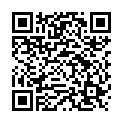|
|
|
| Module code: KIB-ATEC |
|
|
2V (2 hours per week) |
|
3 |
| Semester: 6 |
| Mandatory course: no |
Language of instruction:
German |
Assessment:
[still undocumented]
|
E1614 (P200-0003) Electrical Engineering, Bachelor, ASPO 01.10.2012
, semester 6, mandatory course
E2433 Electrical Engineering and Information Technology, Bachelor, ASPO 01.10.2018
, optional course, technical
KI620 (P200-0003) Computer Science and Communication Systems, Bachelor, ASPO 01.10.2014
, semester 6, optional course, technical
KIB-ATEC (P222-0111) Computer Science and Communication Systems, Bachelor, ASPO 01.10.2021
, semester 6, optional course, technical
KIB-ATEC (P222-0111) Computer Science and Communication Systems, Bachelor, ASPO 01.10.2022
, semester 6, optional course, technical
PIBWI33 (P200-0003) Applied Informatics, Bachelor, ASPO 01.10.2011
, semester 6, optional course, informatics specific
PIB-ATEC (P200-0003) Applied Informatics, Bachelor, ASPO 01.10.2022
, semester 4, optional course, informatics specific
PIB-ATEC (P200-0003) Applied Informatics, Bachelor, SO 01.10.2026
, semester 4, optional course, informatics specific
|
30 class hours (= 22.5 clock hours) over a 15-week period.
The total student study time is 90 hours (equivalent to 3 ECTS credits).
There are therefore 67.5 hours available for class preparation and follow-up work and exam preparation.
|
Recommended prerequisites (modules):
None.
|
Recommended as prerequisite for:
|
Module coordinator:
Prof. Dr. Horst Wieker |
Lecturer:
Golanov, M.Sc.
Metzner, M.Sc.
[updated 27.03.2019]
|
Learning outcomes:
After successfully completing this module, students will have developed an understanding of how information is generated and distributed within a vehicle.
Students will be able to name the advantages and disadvantages of bus systems, as well as the various fields of application
where bus systems are normally used.
In addition, students will be able to list the data typically generated in modern vehicles and the connections between this data and assistance systems. Students will be aware of the fundamental problems of automated driving and its connection with telematics systems.
Students will be capable of demonstrating the basic motivation behind Cooperative Intelligent Transports Systems (C-ITS). They will be able to
reconstruct the basic standardization use cases and explain how messages are structured using given scenarios. Students will be capable of solving routing problems by calculating the best propagation path. Lastly, they will be able to explain how information from vehicle bus systems is used in the context of automated driving.
[updated 26.02.2018]
|
Module content:
This course will give students an insight into automotive engineering and explain how data is generated and communicated in this field.
1. Overview of different bus systems, in particular CAN
2. Introduction to driver assistance systems
3. Introduction to automated driving
4. Introduction to V2X communication
5. V2X communication use cases
6. Protocols and algorithms in V2X communication
[updated 26.02.2018]
|
Teaching methods/Media:
Beamer, board
[updated 19.02.2018]
|
Recommended or required reading:
[still undocumented]
|
Module offered in:
SS 2022,
SS 2021,
SS 2020
|


